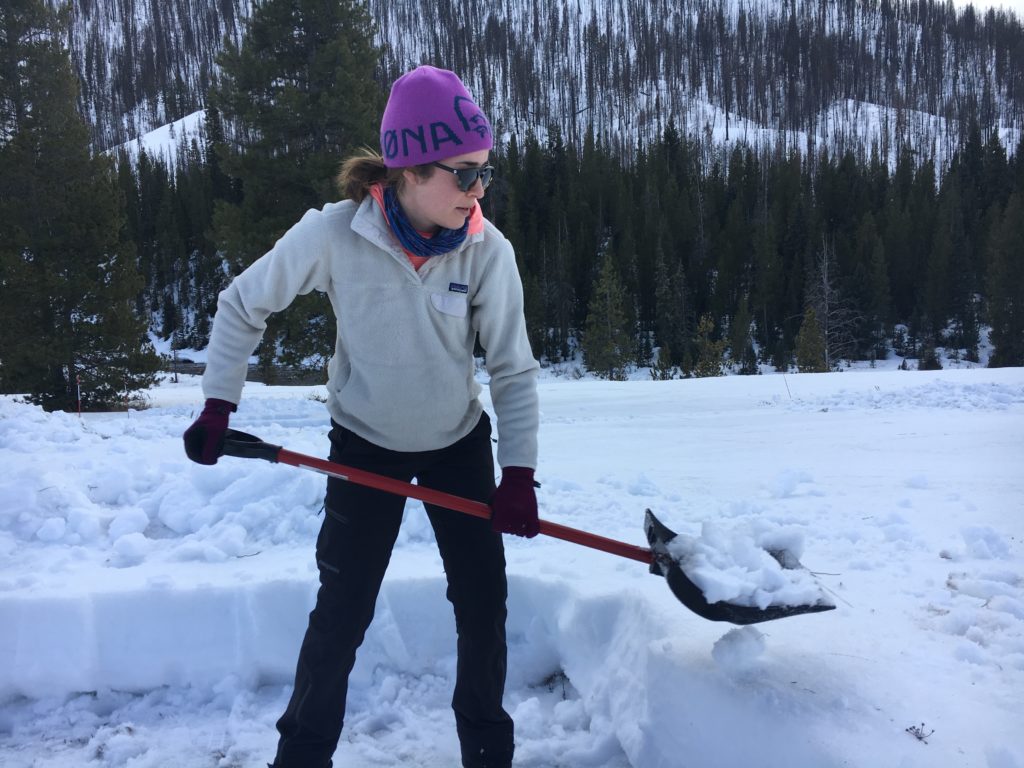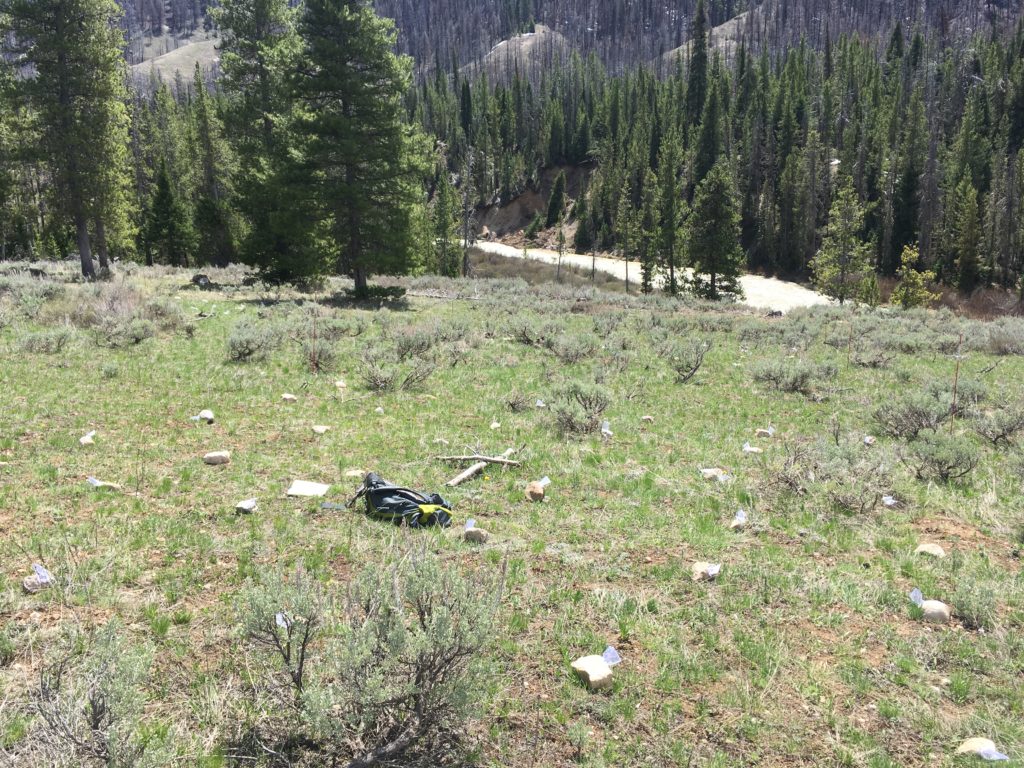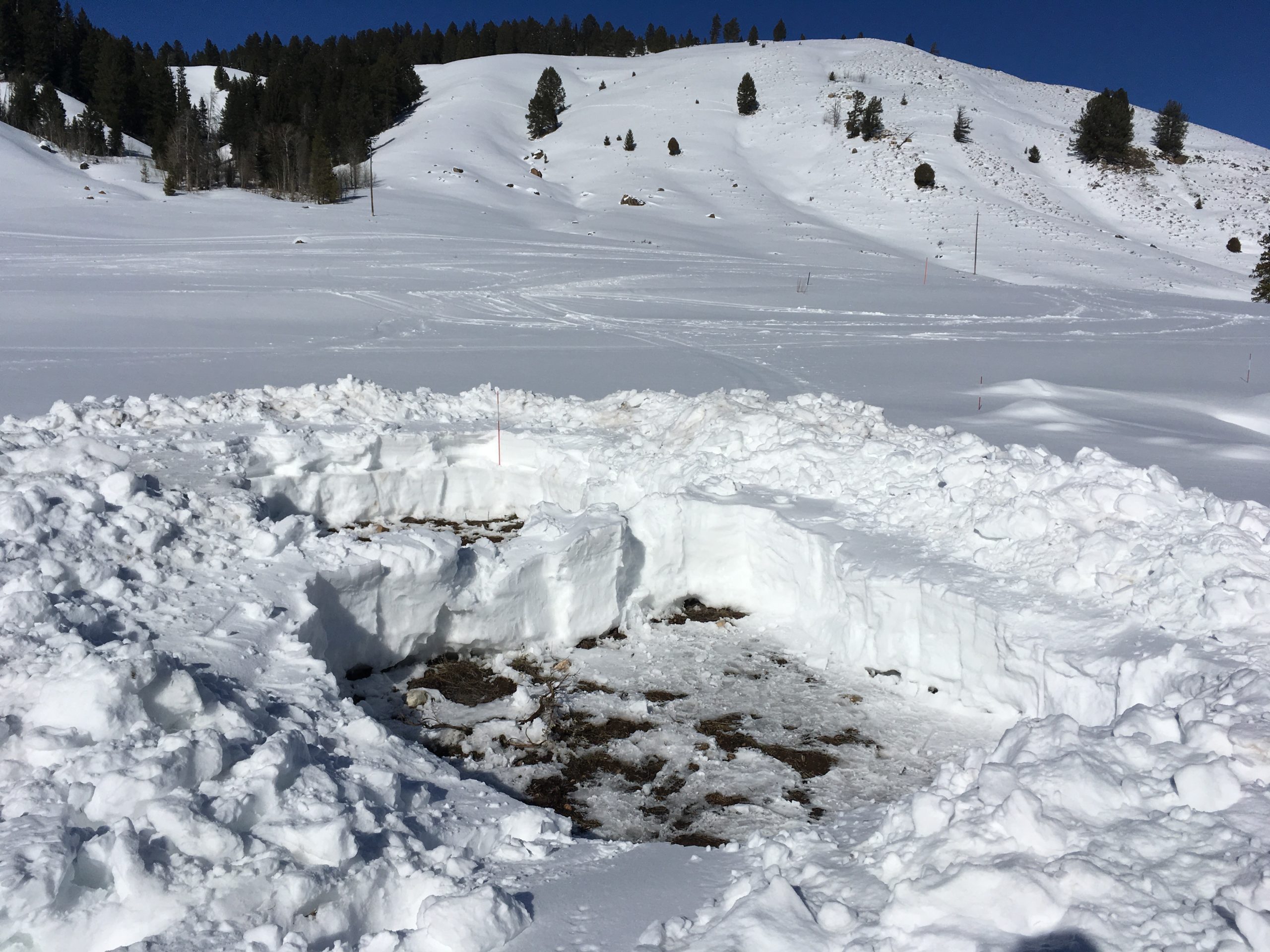Climate change is altering snow conditions in alpine environments. Overwintering invertebrates rely on snow to insulate them from winter's harshest weather. We examined what happens to these animals when snow cover becomes less reliable.
Like most animals in alpine environments, winter plays a dominant role in the survival and development of mason spiders. They overwinter as spiderlings inside of egg sacs that sit on top of rocks. In this position, they are buried under snow in the winter which insulates them from freezing temperatures. In the spring, mason spiders emerge from egg sacs and develop to maturity throughout the summer months. The amount of snow cover in winter and timing of snow melt in the spring influences whether or not spiderlings survive winter and the timing of important developmental stages leading up to reproduction. We investigated how predicted changes in snow cover in the Greater Yellowstone Ecosystem might affect key elements of mason spider biology. To do this, we conducted snow removal experiments that mimicked mid-winter and early snow melts. We then measured mason spider survival and various aspects of spiderling development.
Field Sites
At field sites outside of Jackson, Wyoming in Bridger-Teton National Forest, we performed experiments where we mimicked mid-winter snow melt, early spring snow melt, both, or neither. We recorded temperature at the ground surface for all treatments.



When the snow melted in the spring, we were ready to collect spiderlings the moment they emerged from egg sacs. To do this, we attached small mesh bags to the rock surrounding each egg sac and checked them every day until the spiderlings hatched.
Mason spiderlings were transported to the Elias Lab at UC Berkeley and raised to maturity. We kept note of any time a spiderling molted, matured, or died to help us understand how the snow cover conditions they encountered during winter impacted their development and survival.
This research is ongoing and we hope to share the results of this study soon!
Funding
Grand Teton Association – Boyd Evison Fellowship

Acknowledgements
Thank you to William Wickey for your long hours shoveling snow and Damian Elias, Erin Brandt, and Cody Raiza for taking such great care of spiderlings. Endless thanks to Blakeney Spong for housing and support throughout this research.
All photographs and videos by Maggie Raboin unless specified.
